A Bluetooth LE Cycling Speed and Cadence sensor sends measurements data according to the Gatt characteristic measurement data. For the crank cadence this is:
- Cumulative Crank Revolutions - an unsigned 16bit integer
- Last Crank Event Time - an unsigned 16bit integer with 1/1024s resolution
I'd like to understand how the Last Crank Event Time is defined. The documentation makes it sound like a timestamp but because it is a 16bit integer at 1/1024s it overflows after about 1 minute. So I suspect it is actually a time interval. Below is a sequence of events on a time scale. Message B sends n+2 for the number of crank revolutions but what is the Last Crank Event Time for B?
